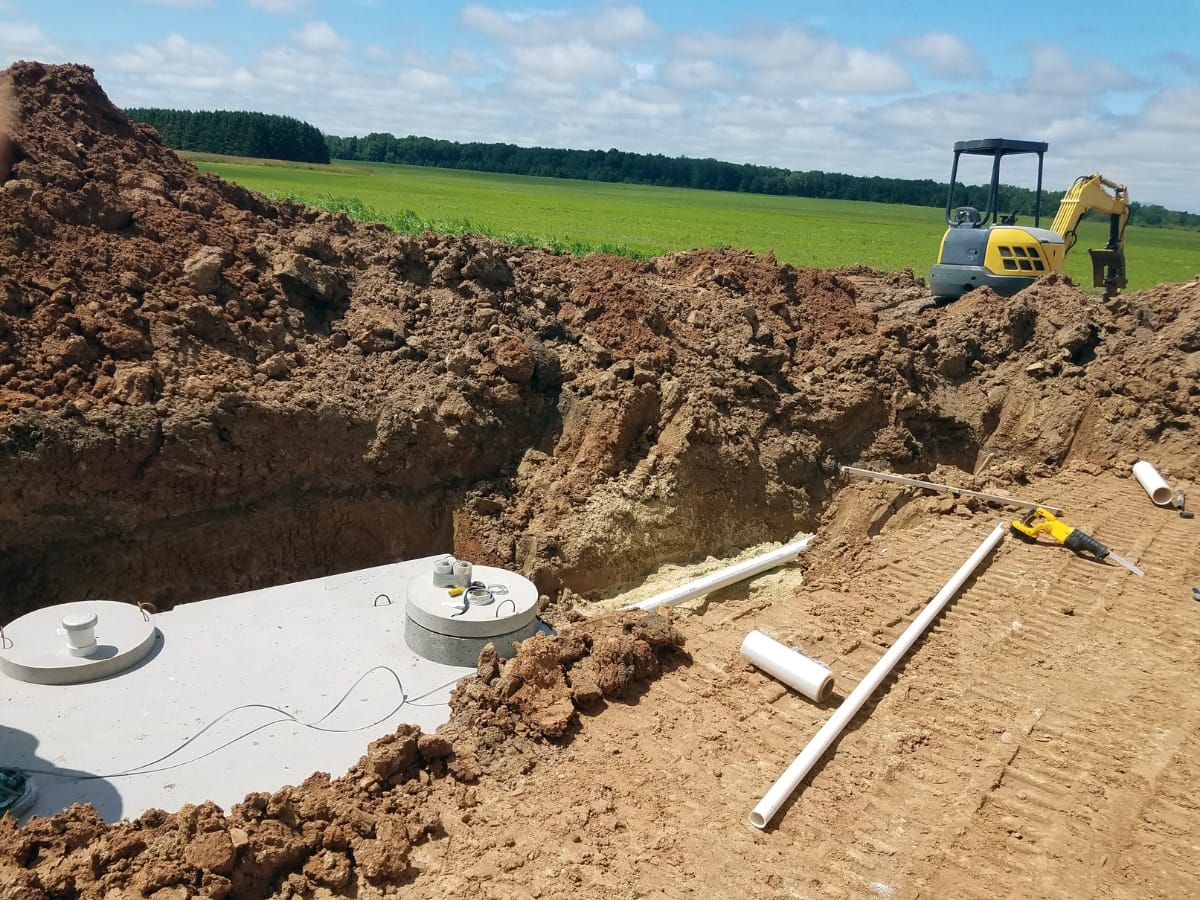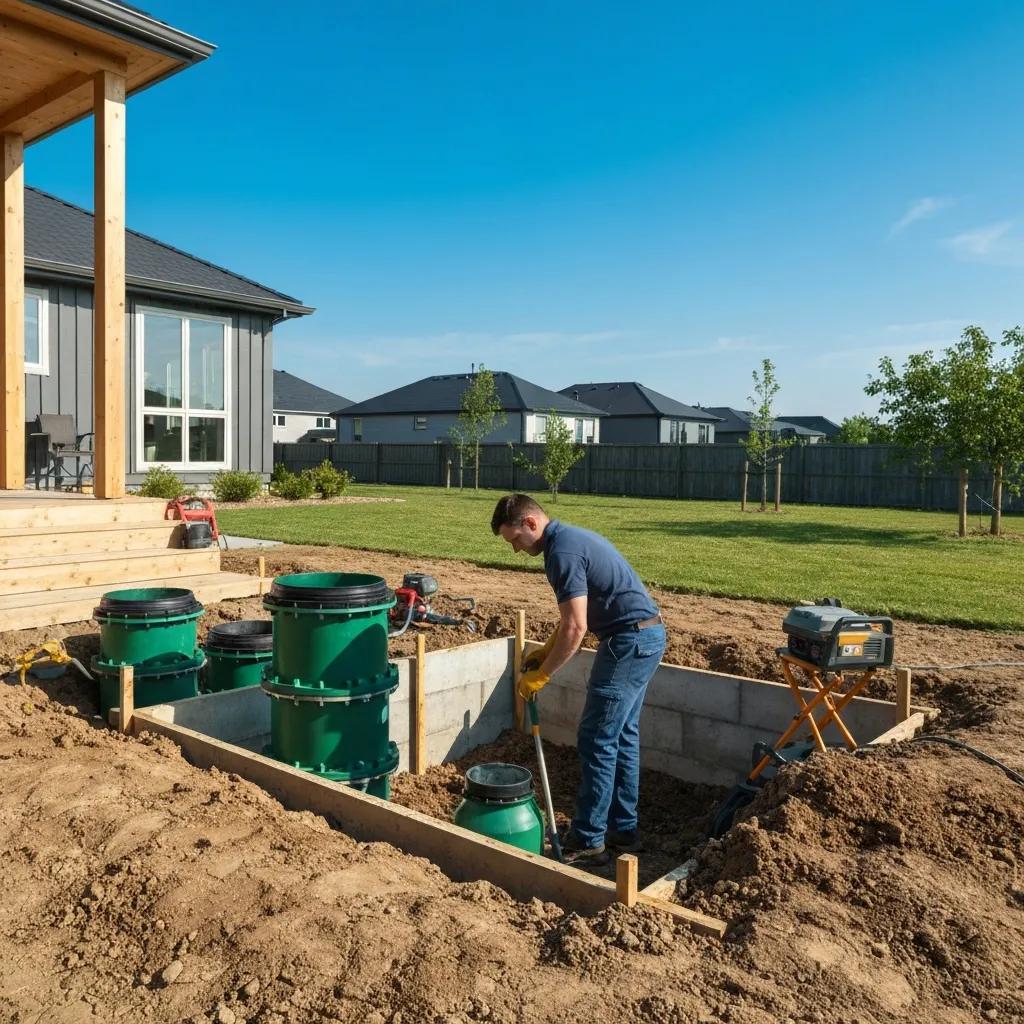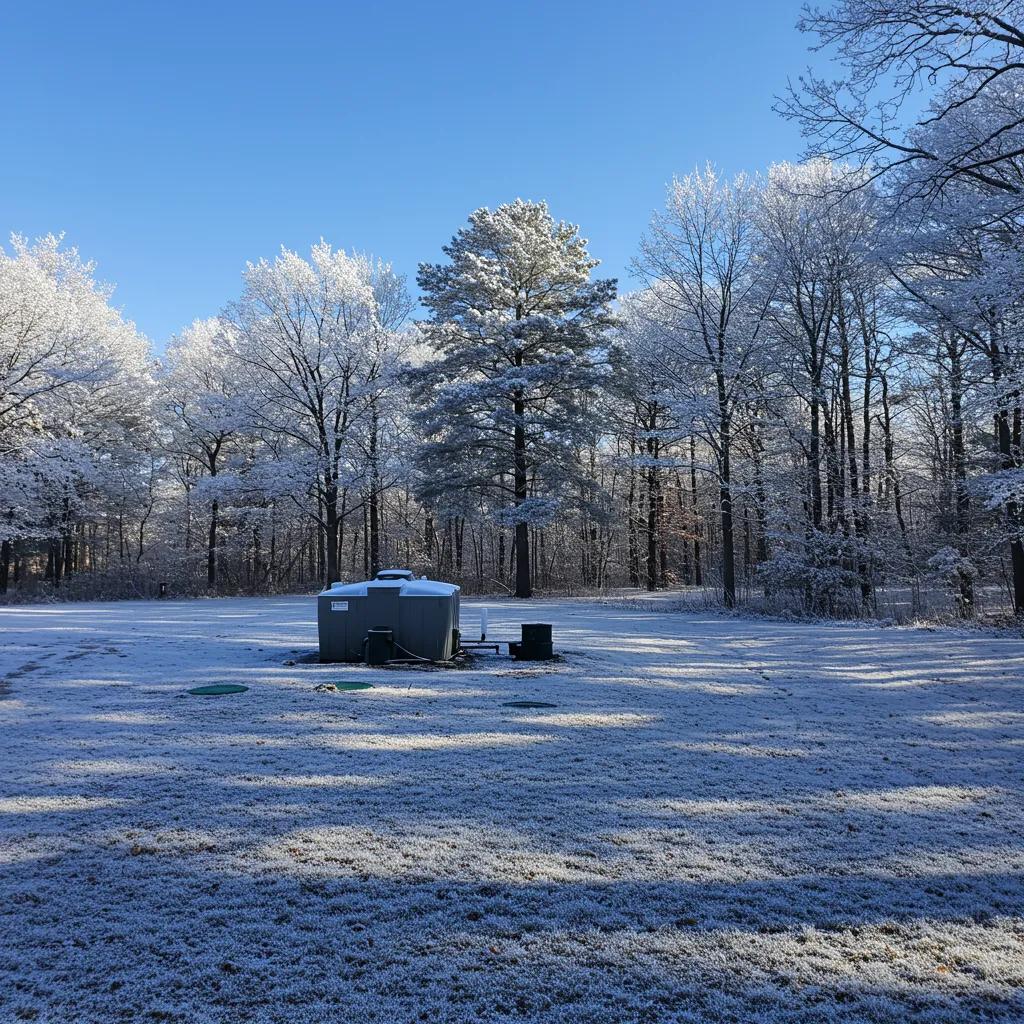For homeowners in Marietta, GA, understanding the key septic system components isn’t just helpful—it’s essential for preventing costly repairs and maintaining a healthy property. From the tank to the drain field, each part plays a critical role in safely processing wastewater, especially given the region’s clay-heavy soil and seasonal rainfall. In this guide, we’ll break down how septic systems work in Marietta’s unique environment, explaining what every homeowner should know about inspections, maintenance, and early warning signs of trouble—so you can avoid backups and protect your investment.
Understanding Septic System Components in Marietta, GA
Demystifying the Septic System Components You Need to Know
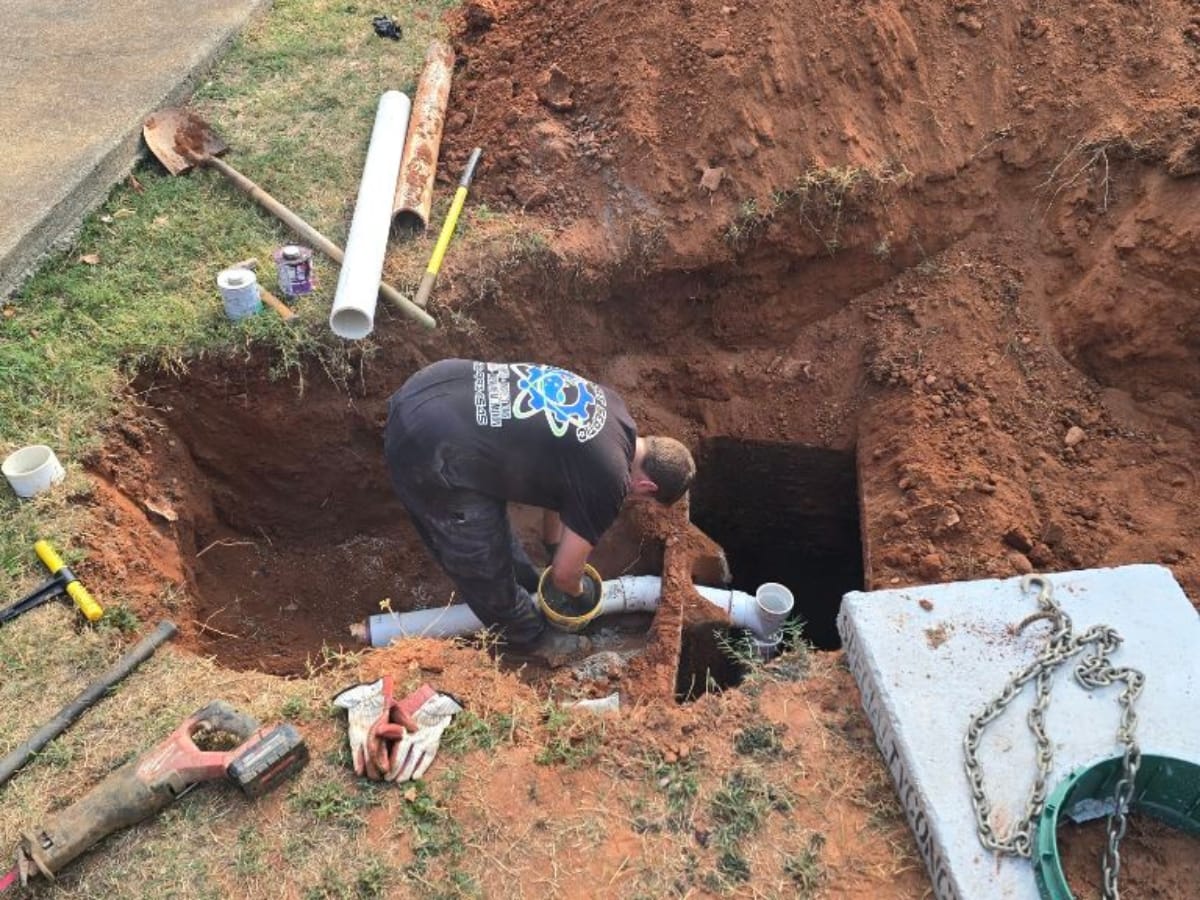
In Marietta, GA, a septic system is a sophisticated, interconnected network designed to treat household wastewater without relying on municipal sewers. This crucial system prevents groundwater contamination and protects your property from damage. Each component plays a specific role: capturing solids, filtering effluent, and distributing treated water into the soil for final purification. Familiarity with these parts empowers homeowners to schedule timely maintenance, spot early warning signs of failure, and choose the right services.
Your Septic Tank: The Unsung Hero of Wastewater Treatment
Think of your septic tank as your home’s first line of defense. It’s a buried, watertight container that receives all wastewater from your home. Inside, gravity works its magic, separating solids from liquids and kickstarting anaerobic digestion to reduce sludge. Solids settle to the bottom, forming a layer of sludge, while oils and greases float to the top as scum. This leaves a clarified liquid layer (effluent) in the middle. This ingenious mechanism prevents raw sewage from ever reaching your drain field, ensuring a much cleaner dispersal process.
Inside Your Septic Tank: How It Works Its Magic
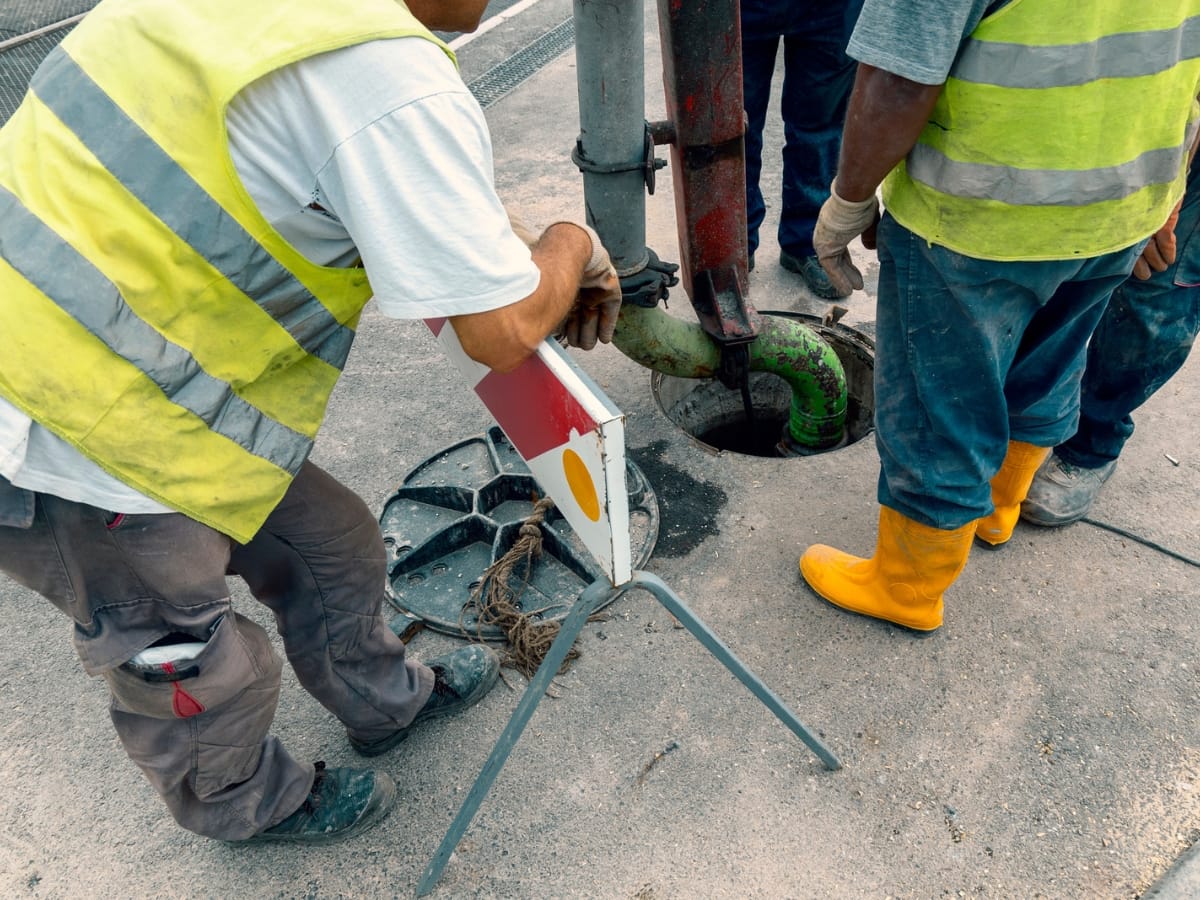
The septic tank is truly the heart of your septic system, engineered to receive wastewater and expertly separate solids from liquids using the simple power of gravity. Within the tank, heavier solids sink to the bottom, becoming sludge, while lighter oils and greases rise to the top, forming a scum layer. The clarified liquid, known as effluent, then flows onward to the drain field for its next stage of treatment. This foundational process is key to understanding how your septic system protects your home and the environment.
What Are the Key Parts Inside a Septic Tank?
Let’s peek inside your septic tank. These crucial internal parts work tirelessly to ensure proper flow and filtration, protecting your entire system.
| Component | What It Does | Why It Matters |
|---|---|---|
| Inlet Baffle | Directs incoming wastewater downward | Prevents turbulence and ensures proper settling of solids. |
| Outlet Baffle | Prevents scum and solids from exiting | Crucial for keeping sludge and scum out of your drain field. |
| Effluent Filter | Screens fine particles before discharge | Provides an extra layer of protection for your drain field, catching anything the baffles miss. |
| Access Riser | Provides safe, above-ground inspection port | Allows Smart Septic Pros technicians easy and safe access for inspections and pumping. |
Each of these parts is vital for protecting your drain field from clogging and extending the overall life of your system, creating natural points for scheduled service.
The Drain Field: Where Wastewater Gets Its Final Polish
Once the effluent leaves the septic tank, it flows into the drain field (also known as the leach field). Here, it’s distributed through perforated pipes into gravel-lined trenches. But the real magic happens in the soil: billions of soil microbes break down any remaining contaminants, effectively removing harmful bacteria before the water safely recharges the groundwater.
- Effluent flows from the tank into a distribution box, ensuring even flow.
- Perforated pipes then disperse the liquid uniformly into gravel trenches.
- Specialized soil absorption layers filter out pathogens and nutrients, completing the treatment.
This layered filtration system ensures environmentally safe dispersal and sustains your septic system’s long-term performance.
Keeping Your Drain Field Healthy: Operation & Essential Maintenance
The drain field is absolutely essential for the final, critical stage of wastewater treatment. It receives the pre-treated effluent from your septic tank and carefully distributes it through perforated pipes into the surrounding soil. Here, natural microbes get to work, breaking down any remaining contaminants before the water safely returns to the groundwater. Regular, proactive maintenance is not just recommended—it’s crucial to prevent costly failures and ensure your system continues to protect your home and the environment.
Understanding your drain field’s design and function leads us seamlessly into other supporting components that keep your system running smoothly.
Beyond the Tank & Field: Other Vital Septic System Players
While the tank and drain field are the stars, several auxiliary parts work behind the scenes to maintain controlled flow and treatment:
- Distribution Box (D-Box): This unsung hero balances effluent flow, ensuring it’s evenly distributed to all drain lines.
- Perforated Pipes: These specially designed pipes guide wastewater throughout the gravel bed, allowing for controlled release.
- Gravel Layer: Surrounding the pipes, this layer promotes even dispersion and provides a clean environment for effluent to enter the soil.
- Soil Absorption Zones: These are the natural filtration layers where the final purification occurs through microbial action.
Septic Tank Troubles? Common Issues & Smart Solutions
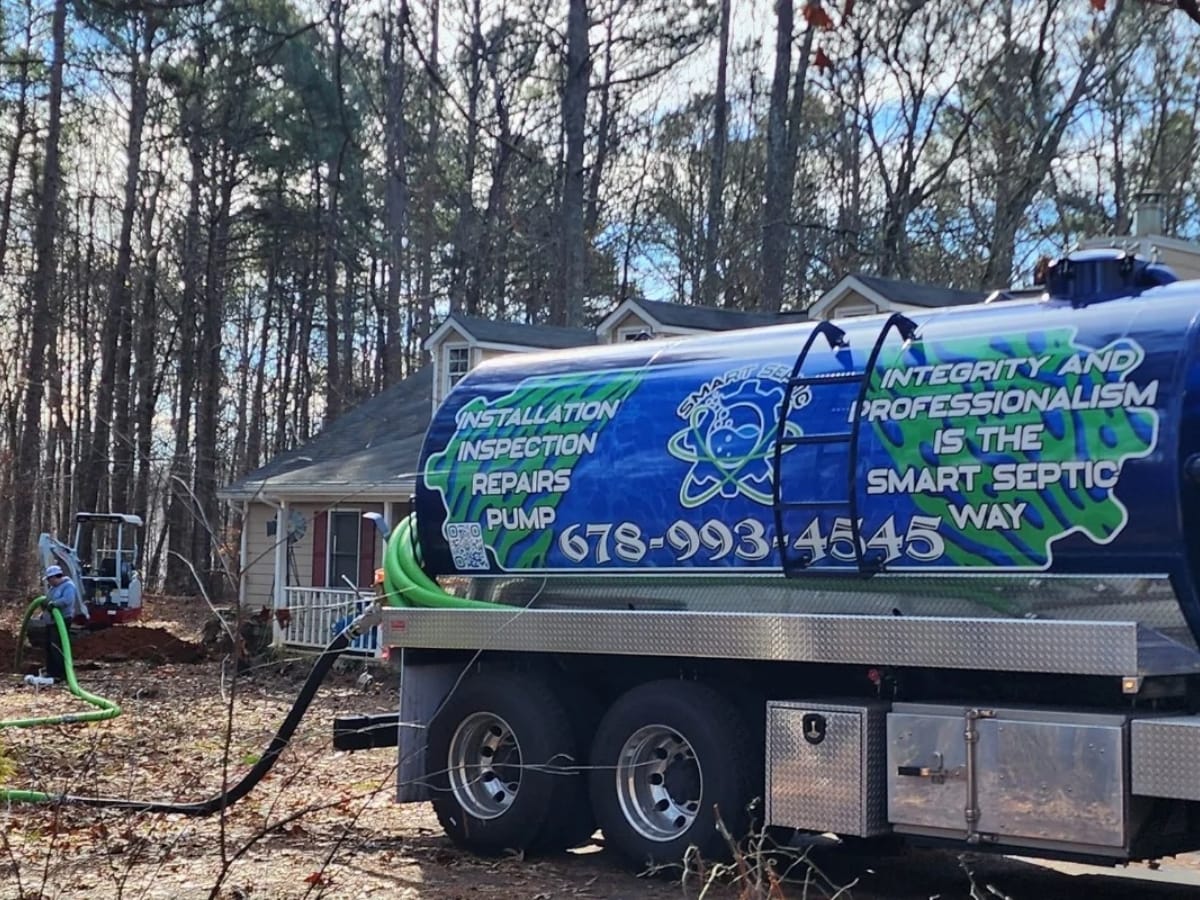
Septic tanks are built to last, but problems can creep in when solids build up, parts wear out, or maintenance slips. Catching issues early protects your yard, keeps indoor plumbing moving, and extends the life of key septic system components like the tank, baffles, effluent filter, distribution box, and drain field.
Why Do Septic Tanks Fail?
Most failures trace back to a few causes. Clogs form when sludge and scum aren’t pumped on schedule or when wipes, grease, and other non-biodegradables enter the system. Leaks start as hairline cracks in aging concrete, shifting tanks, or damaged lids, letting groundwater in or effluent out. Overflows happen when the outlet or effluent filter is blocked, when the distribution box settles out of level, or when the drain field is saturated and can no longer absorb water.
You’ll often see early warning signs before a backup. Slow drains, gurgling fixtures, sewage odors outdoors, wet patches over the lateral lines, or a high water level in the tank relative to the outlet are all red flags that deserve a closer look.
Common Problems And Practical Responses
Clogs usually respond to a full pump-out and a careful rinse of the tank to break up settled sludge. The technician should also remove and clean the effluent filter and confirm that inlet and outlet baffles or tees are intact so solids stay where they belong. Leaks need a structural fix, not just a pump. That can mean patching cracks in concrete, replacing a compromised lid, or installing an internal liner when appropriate. If the leak is tied to settlement, the tank surround may need compacted backfill and improved surface grading to keep runoff away.
Overflows require a step-by-step diagnosis. First, clear the outlet and service the effluent filter. Next, check the distribution box for level and flow to each lateral. If the field is waterlogged, reduce hydraulic load while you plan remediation. Options include resting the field and pumping more frequently, redirecting roof and sump water away from the area, soil restoration methods where allowed, or replacing failed trenches. A good inspection report will spell out what’s failing and why, not just what to replace.
A Solid Repair Approach
A thorough repair starts with locating and exposing the access lids safely, then measuring scum and sludge depths and the operating level. A camera inspection of the outlet line can reveal roots, crushed pipe, or obstructions between the tank and the distribution box. Baffles or sanitary tees should be replaced if missing or deteriorated, and risers added to bring lids to grade for safer, faster future service. Where roots are present, cutting and targeted root control may be used along with sealing entry points so the problem does not return.
For older systems, expect recommendations that balance cost and service life. Sometimes that means modest upgrades now, like an easily cleaned effluent filter and risers, paired with a plan to rehabilitate or replace a tired drain field later.
Is It Time To Pump?
Most homes do well with pumping every 3 to 5 years, but the real answer depends on tank size, number of occupants, water use, and whether a garbage disposal is used. A practical rule is to pump when the combined scum and sludge layers reach roughly one-third of the liquid depth, or when sludge is within about a foot of the outlet tee. Keep simple records of dates, sludge measurements, and any repairs. Clean the effluent filter at least once a year, spread laundry over the week, fix running toilets, and keep vehicles and heavy equipment off the drain field. Additives and quick fixes rarely solve underlying problems; steady maintenance does.
Drain Field Disasters: Spotting the Signs Before It’s Too Late
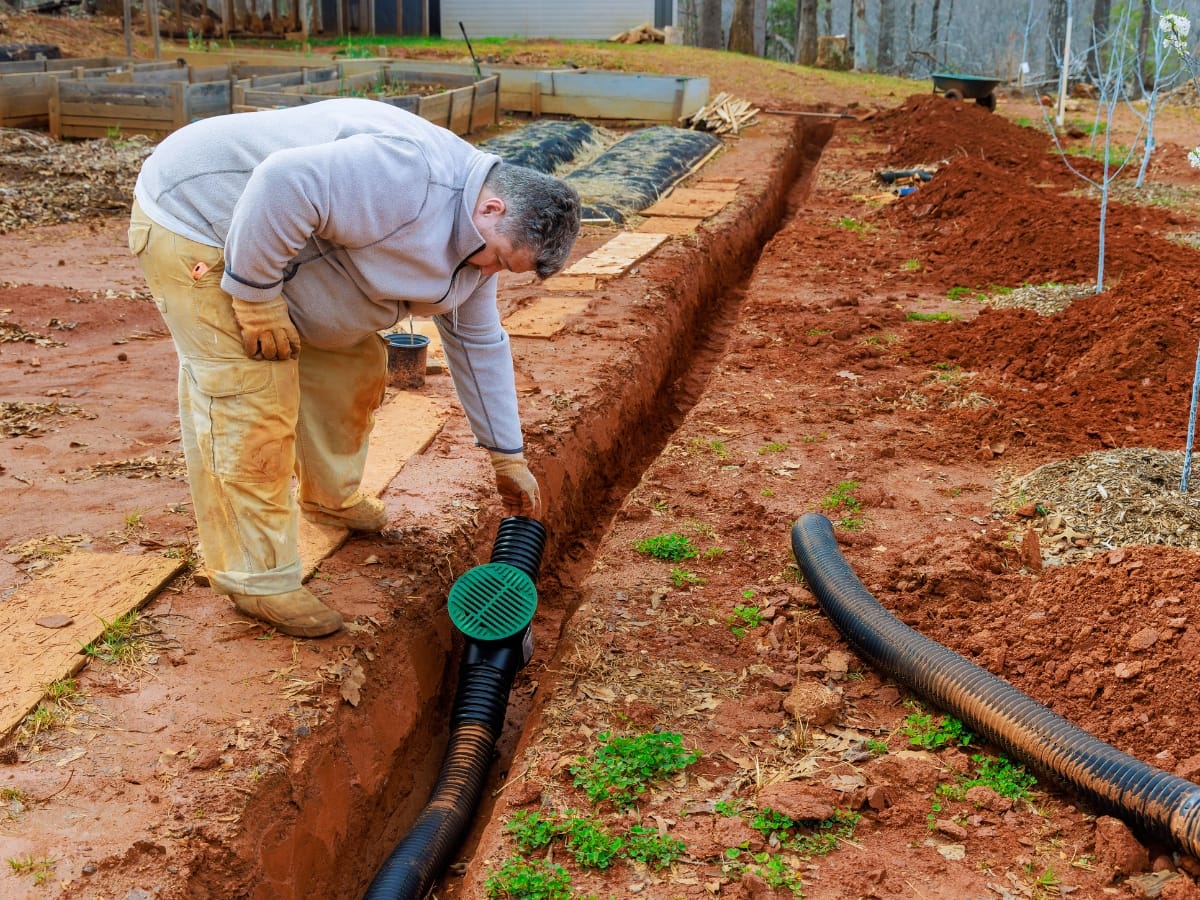
When a drain field starts to fail, wastewater can no longer soak into the soil as designed. Early warning signs include soggy or spongy turf above the laterals, patches of unusually bright grass, sewage odors outdoors, gurgling fixtures, and slow drains inside the house. In severe cases, effluent can surface or back up into tubs and toilets. Beyond being unpleasant, these problems threaten property value and can create health risks.
Common Drain Field Failures & What Causes Them
Most drain field problems fall into a few categories. Hydraulic overload occurs when more water enters the system than the soil can accept. Leaking toilets, concentrated laundry days, or heavy rain combined with poor grading can saturate trenches. Biological clogging develops when excessive solids escape the tank and form a thick biomat at the trench interface.
Skipping tank pumping, missing outlet baffles, or a neglected effluent filter all increase the odds of this outcome. Fats, oils, and grease make it worse by coating soil and pipe perforations. Physical damage is another culprit. Parking vehicles over the field compacts soil and crushes pipe. Tree and shrub roots migrate toward moisture, invading perforations and distribution boxes. In high water table areas, seasonal groundwater can intersect trenches and halt percolation entirely.
Understanding how these issues arise helps you target a fix. Think of the system as a chain of septic system components that must all work together: the tank, inlet and outlet baffles, the effluent filter, the line to the distribution box, and the drain field laterals. A weakness in one link often shows up as trouble in the next.
Bringing a Struggling Drain Field Back to Life
Repairs start with diagnosis. Open the tank, measure sludge and scum, and check operating level relative to the outlet. Service or replace the effluent filter and confirm that baffles or tees are intact so solids stay in the tank. Inspect the line to the distribution box and verify that the box sits level and feeds each lateral evenly. Where lines are obstructed by grease or fines, low-pressure jetting can clear perforations. If roots are present, remove growth and seal entry points.
Regrading the yard to shed stormwater, adding downspout extensions, and routing sump discharge away from the field reduce incoming water that the soil cannot handle. In some situations, resting the field while pumping the tank more often lets trenches recover. Where soils are compacted, soil restoration methods approved by local codes may help. If laterals are crushed or the field is exhausted, replacing trenches or adding a conforming expansion area may be the right long-term solution.
When to Bring In a Licensed Septic Professional
Do not wait for a full backup. Standing water or persistent wetness over the field, indoor drains that slow despite clear household plumbing, recurring odors, or an alarm on a pump system are all signals to get help. A licensed provider can run a camera, test distribution, check elevations, and document what is failing and why. That report should outline immediate steps, such as filter service and outlet clearing, and longer-term options that fit site conditions, soil type, and local regulations.
Simple Habits That Protect the Field
Pump the tank at intervals that match household size and usage, typically every 3 to 5 years. Clean the effluent filter at least annually. Fix running toilets and spread laundry through the week. Keep vehicles and heavy equipment off the field, and choose shallow-rooted plants over the trenches. Divert roof and surface water away from the area. Additives are rarely a cure for physical or hydraulic problems, while steady maintenance and water management reliably extend system life.
Septic System Components in Marietta: Finding the Right Fit for Your Property
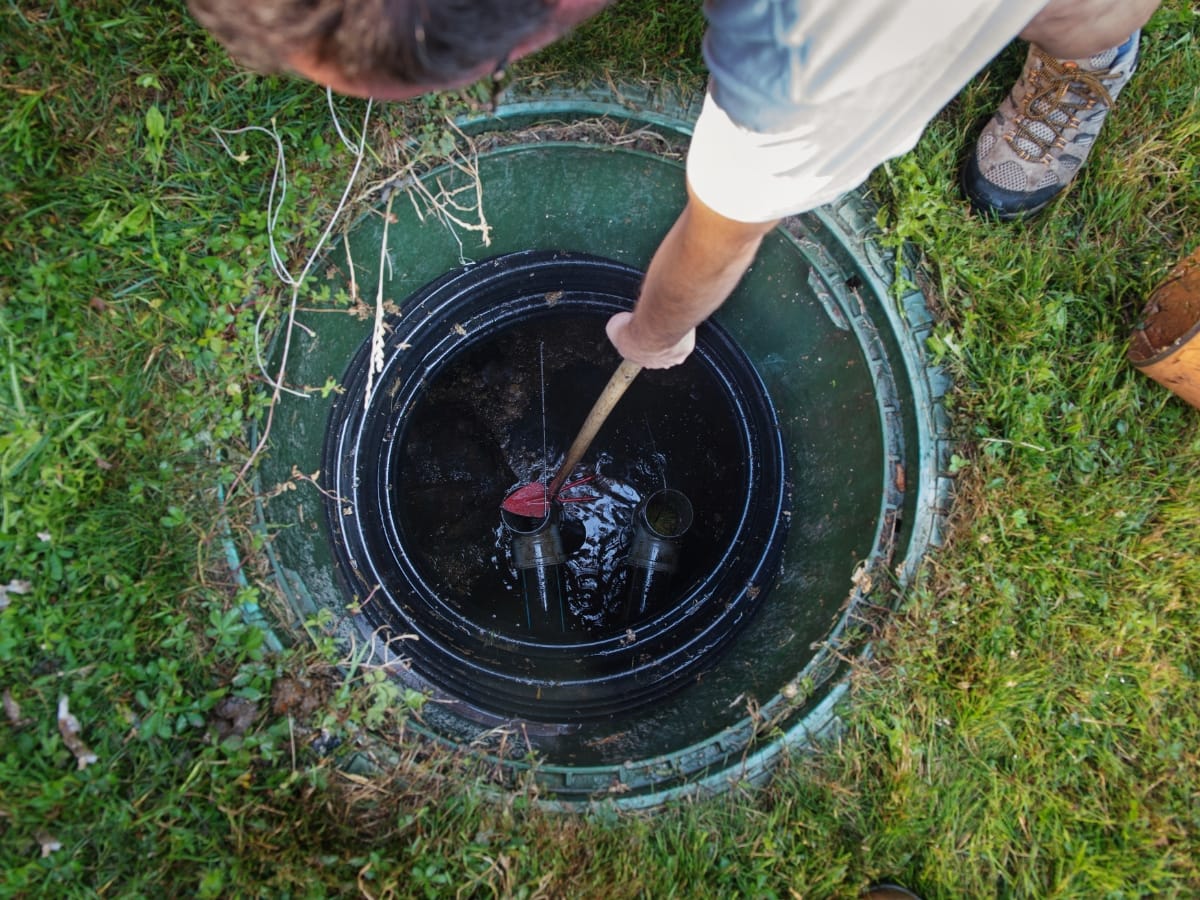
Marietta homes use several types of onsite wastewater systems, and the right choice depends on soil, lot size, elevation, and local rules. A basic understanding of how the main septic system components work together helps you compare options: the tank, inlet and outlet baffles or tees, an effluent filter, a distribution box or manifold, and the drain field or other dispersal method. When those parts are matched to site conditions, systems run cleaner and last longer.
The Workhorse: Conventional Septic Systems
Conventional systems are common across Georgia because they are simple and reliable on suitable soils. Wastewater flows into a buried tank where solids settle and grease floats. Clarified liquid moves by gravity to trenches in the yard. Perforated pipe rests in gravel or engineered media so the effluent can spread and soak into the soil. Microbes in the soil complete treatment as water percolates downward. These systems are cost-effective and straightforward to service, but they require soil with good structure and enough depth above seasonal groundwater or rock.
Aerobic Treatment Units for Tougher Sites
Aerobic Treatment Units add air to the process. A small blower supplies oxygen to the tank so bacteria break down waste more completely. The result is a higher quality effluent leaving the unit. Because the liquid is cleaner, some sites can use smaller drain fields or alternative dispersal where code allows. ATUs are useful on small lots, in clay-heavy soils that drain slowly, or near sensitive features such as streams. They do have moving parts and require routine inspections, filter cleaning, and pump servicing to keep performance steady.
Alternatives When Conditions Are Tight
Some properties need a different approach. A mound system raises the drain field above native soil using layers of sand and gravel. The elevation adds vertical separation from high groundwater or shallow rock while still allowing the soil to finish treatment. A drip disposal system meters effluent through narrow tubing with emitters set across a larger area. Low, frequent doses match soil intake and work well on slopes or in landscaped yards where trenching is hard to fit. A recirculating sand filter runs wastewater through a bed of washed sand, often multiple times, before sending it to dispersal. That extra step improves effluent quality and helps protect nearby wells and waterways.
Choosing What Fits Your Lot
Start with a soil and site evaluation. Percolation rates, texture, depth to rock or water, slope, and setbacks from wells and property lines guide what is allowed. Consider how much water the household uses and whether future additions might change demand. Confirm where vehicles, patios, and trees will go so you protect the drain field from compaction and roots. Ask how each option will be serviced. Easy access to lids, risers brought to grade, and a cleanable effluent filter make routine work faster and cheaper.
Long-Term Care Across All Systems
No matter which design you pick, the basics are the same. Pump the tank on a schedule that matches occupancy and use, typically every 3 to 5 years. Clean the effluent filter at least once a year. Fix running toilets and space out laundry so the system is not flooded in a single day. Keep roof and surface water directed away from the field. Do not drive or park on the dispersal area. Additives are not a substitute for maintenance and rarely solve structural issues.
Why Knowing Your Septic System Matters: Peace of Mind for Marietta Homeowners
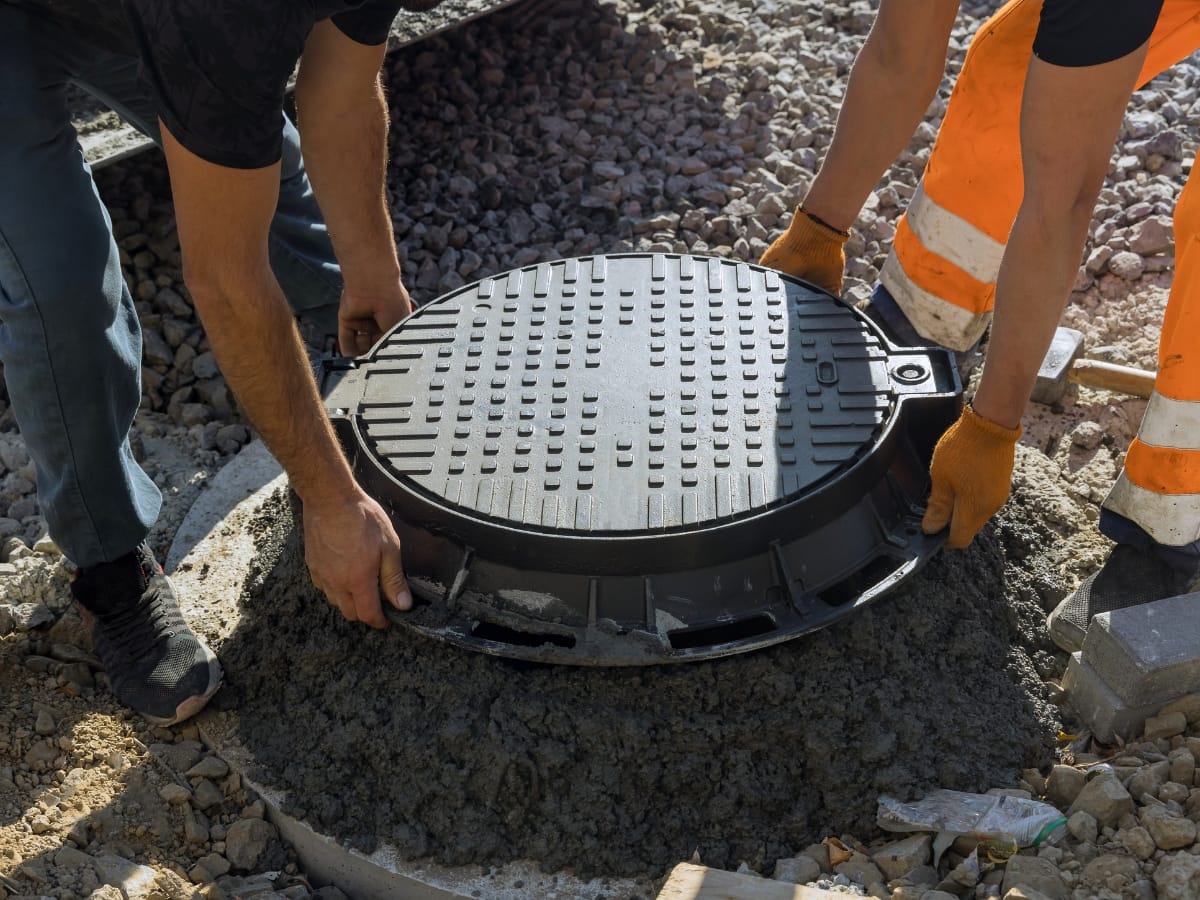
Understanding how your system works is the easiest way to avoid surprise repairs. When you know the purpose of key septic system components and how they fit together, you can spot small issues early, schedule sensible maintenance, and stay aligned with local rules. The payoff is fewer headaches, a cleaner yard, and a system that lasts longer.
Save Money, Avoid Headaches: The Power of Proactive Septic Maintenance
Routine care keeps solids where they belong and protects the drain field. Regular tank pumping clears sludge and scum before they reach the outlet. A quick check of inlet and outlet baffles or tees makes sure wastewater flows correctly and solids do not escape. Cleaning the effluent filter helps keep fines out of the laterals and maintains even flow.
Most homes need pumping every three to five years, but the right interval depends on tank size, household size, and water use. Spreading laundry through the week, fixing running toilets, and keeping wipes, grease, and non-biodegradables out of the system all reduce stress on the tank and trenches. Simple records of pump dates, filter cleanings, and any repairs give you a clear picture of system health and help you decide when to service next.
Navigating Septic Regulations: What Marietta Homeowners Need to Know
Georgia’s onsite rules and Cobb County requirements are designed to protect groundwater and neighboring properties. New installations need permits, and most changes or replacements do as well. Setbacks from wells, streams, and property lines are enforced, and minimum tank sizes are typically based on bedroom count to reflect peak use.
If you are planning an addition, a pool, or driveway work, review the location of the tank, the line to the distribution box, and the drain field so construction does not damage buried parts or reduce required separations. Good documentation helps. A simple sketch that marks tank lids, risers brought to grade, and the drain field area will save time during service visits and keeps future projects from encroaching on critical infrastructure.
Extend Your System’s Life: The Value of Regular Inspections
An annual inspection is inexpensive insurance. A technician will measure sludge and scum levels, confirm that baffles or tees are intact, clean or replace the effluent filter if needed, and verify that the operating level in the tank sits at the correct elevation. The line to the distribution box can be checked for blockages or settlement, and the box itself can be leveled so each lateral receives a fair share of flow.
Outdoors, signs of early drain field stress include unusually lush grass over laterals, persistent damp areas in dry weather, and odors after heavy use. Catching these signals early allows for simple fixes such as filter service, outlet clearing, water use adjustments, and stormwater diversion before problems grow into backups or trench failure. A clean, well-documented inspection report also smooths real estate transactions by showing buyers that the system has been maintained.
Know the Parts, Protect the Whole
Think of the system as a chain of tasks performed by specific parts. The tank settles solids and traps scum, baffles or tees direct flow, the effluent filter screens fines, the distribution box apportions liquid, and the drain field soil completes treatment as water percolates. When one link struggles, the next one shows the strain. Learning where these parts are, how to access them safely, and what normal operation looks like makes maintenance straightforward and keeps small issues from turning into big repairs.
Septic System Costs in Marietta, GA: What to Expect for Maintenance & Repairs

Knowing typical pricing helps you plan and avoid surprises. Final costs in Marietta depend on tank size, soil conditions, depth of the lids, access for service trucks, and which septic system components need attention. A clear scope and an itemized estimate are the best ways to compare quotes.
Pumping and Cleaning Costs
For a standard 1,000-gallon tank, routine pumping in Marietta commonly falls in the 250 to 300 dollar range. The price shifts up or down based on how easy it is to locate the tank, whether the lids are at grade, and the distance from the driveway to the tank. If digging is required to expose buried lids, expect added labor. Many providers include a basic inspection during pumping. If the effluent filter needs cleaning or replacement, that is usually a small add-on. Bringing lids to grade with risers is a one-time upgrade that makes future visits faster and cheaper.
Installation and Repair Costs
A new conventional system for a typical three-bedroom home often lands between 7,000 and 8,000 dollars, assuming suitable soils and a straightforward layout. That price reflects the tank, distribution box, trenches, gravel or media, and final grading. Tougher sites raise costs. High groundwater, tight lots, or heavy clay may require alternative designs or engineered plans.
Minor repairs are far less. Replacing a damaged baffle or sanitary tee can start under 500 dollars. Sealing a small crack in a concrete lid or swapping an effluent filter are also modest line items. Costs climb when problems involve multiple septic system components at once, such as a deteriorated outlet, a settled distribution box, and uneven flow to the laterals. A camera inspection between the tank and the field is a smart diagnostic step before committing to larger work.
Drain Field and Soil Factors
Drain field work varies the most. Restoring distribution, leveling the box, and flushing laterals can solve some performance issues at a manageable cost. If trenches are collapsed or soils are saturated and no longer percolate, replacement or adding a conforming expansion area may be required. Site evaluation, permits, soil testing, and final inspections add to the total but protect you by ensuring the design matches real site conditions.
Maintenance That Protects Your Budget
Regular service stretches the life of expensive parts. Most homes do well with pumping every 3 to 5 years, adjusted for household size, water use, and whether a garbage disposal is in play. Annual checks of baffles or tees, the effluent filter, and the distribution box catch small issues before they reach the drain field. Simple habits help too. Fix running toilets, spread laundry through the week, and keep wipes, grease, and non-biodegradable items out of the system.
Urgent Problems and After-Hours Calls
Backups and overflows rarely follow a schedule. If you need after-hours help, ask for clear pricing before dispatch, including service call, labor, and disposal fees. A temporary pump-down to restore flow, followed by a daylight diagnosis of the underlying cause, is often the most cost-effective path.
Your Top Septic Questions Answered: FAQs for Marietta Homeowners
Homeowners often have similar questions about their septic systems, from service intervals to failure indicators and local regulations. Addressing these concerns helps build confidence in your system’s performance and ensures regulatory compliance.
How Often Should a Septic Tank Be Pumped in Marietta?
For most households, septic tanks typically require pumping every three to five years. However, larger households or those with heavy water usage may need more frequent service.
What Are the Signs of a Failing Septic System?
Early warnings include slow drains in your home, foul odors near the septic tank or drain field, consistently wet or soggy spots on your lawn, and sewage backups in your household fixtures.
What Are the Basic Septic Tank Inspection Requirements in Georgia?
Georgia mandates that licensed contractors inspect septic tanks for structural integrity, baffle condition, and effluent filter function, especially before property transfers and at defined intervals.
How Do Local Regulations Affect Septic System Installation and Maintenance?
Marietta and Cobb County codes specify requirements for permit acquisition, approved system types, necessary setback distances from structures and property lines, and mandatory inspection schedules, all designed to safeguard public health and the environment.
A clear grasp of these topics empowers Marietta residents to maintain safe, efficient septic systems and confidently coordinate expert services.
Conclusion
Understanding your septic system’s components is the first step toward preventing costly failures and maintaining peak performance—especially in Marietta’s unique soil conditions. At Smart Septic Pros, we don’t just explain how your system works; we provide expert septic maintenance, repairs, and emergency services to keep it running smoothly. Take control of your septic health today—call 678-993-4545 or fill out our contact form to schedule an inspection with Marietta’s most trusted septic specialists.
